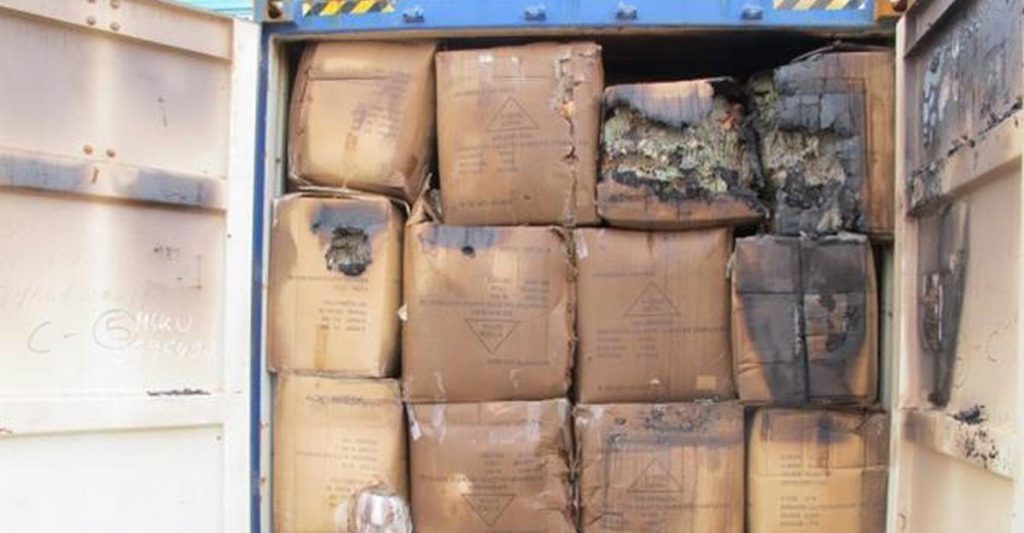Protecting Your Cargo: How to Prevent Moisture Damage in Shipping Containers During Winter
สารบัญ
Introduction to moisture damage
Shipping containers are designed to protect goods during transportation, but they can also be susceptible to humidity-related issues. Moisture damage can have detrimental effects on your cargo, leading to problems such as mold, corrosion, or mildew. One of the most effective ways to prevent moisture damage is by using shipping container desiccants. This article will explore the relationship between temperature, humidity, and moisture control in shipping containers, particularly during winter months.
Relative Humidity: A Key Factor in Shipping Container Moisture Control
Relative humidity is the amount of moisture in the air compared to the maximum amount the air can hold at a specific temperature. As temperature changes, so does the air’s capacity to hold moisture. When the air inside a shipping container is cooler, it can’t hold as much moisture as warmer air. This means that during colder months, higher levels of humidity can be present inside the container, increasing the risk of moisture damage to the cargo.
Dew Point: Understanding How Temperature Affects Condensation
Dew point is the temperature at which air becomes saturated and can no longer hold all of its water vapor, leading to condensation. When the temperature inside a shipping container drops below the dew point, excess moisture in the air can condense on the cargo or inside the container. This is especially problematic during winter, as colder temperatures can cause higher humidity levels inside the container, leading to a higher risk of condensation and moisture damage.
Challenges of Controlling Humidity in Shipping Containers during Winter
During winter, maintaining proper humidity levels inside shipping containers can be challenging. The colder temperatures outside can lead to higher humidity levels inside the container, increasing the risk of condensation and subsequent moisture damage to the cargo. As a result, it is essential to take proactive measures to control humidity levels and protect your cargo from damage.

Strategies for Preventing Moisture Damage in Shipping Containers
To prevent moisture damage during winter, it is crucial to use more units of shipping container desiccant. This will help to maintain a low humidity level inside the container and protect your cargo from damage. Other preventive measures include:
- Ensuring proper insulation of the container to minimize temperature fluctuations
- Providing adequate ventilation to allow moisture to escape
- Regularly monitoring humidity levels inside the container to detect any issues early
- Use container desiccant to prevent moisture buildup
Choosing the Right Desiccant for Your Shipping Container
There are several types of desiccants available on the market, including silica gel, calcium chloride, and natural clay. To choose the most appropriate desiccant for your shipping container, consider factors such as the container size, type of cargo, and climate conditions. Each desiccant has its advantages and disadvantages, so it is essential to weigh your options carefully and select the one that best meets your needs.
Expert Consultation at Your Fingertips
At our company, we understand the importance of protecting your valuable cargo from moisture damage. That’s why we offer free consultation services to help you choose the most suitable desiccant solution for your shipping needs. Our team of experts is always ready to provide personalized advice and guidance, ensuring you make the best decisions for your specific situation. Don’t hesitate to reach out to us for any questions or concerns; we’re here to help you keep your cargo safe and dry throughout the entire shipping process. So give us a call for your free consultation at: 0858124188 or drop us an @LINE
See our products here: https://sse.co.th/product-category/container-desiccant/
Proper Installation and Maintenance of Shipping Container Desiccants
To ensure the effectiveness of shipping container desiccants, proper installation and positioning are crucial. Follow the manufacturer’s recommendations for placement and spacing, and make sure the desiccants are not obstructed by cargo. Regular inspection and replacement of desiccants are also essential to maintain their effectiveness in controlling humidity levels inside the container.
Conclusion
Using more units of shipping container desiccant during winter is essential to prevent moisture damage to your cargo. Proper planning and preventive measures, such as insulation, ventilation, and regular monitoring, are critical to protect your cargo in all weather conditions. By understanding the relationship between temperature, humidity, and moisture control, you can take the necessary steps to ensure the safety and integrity of your cargo during transport.
